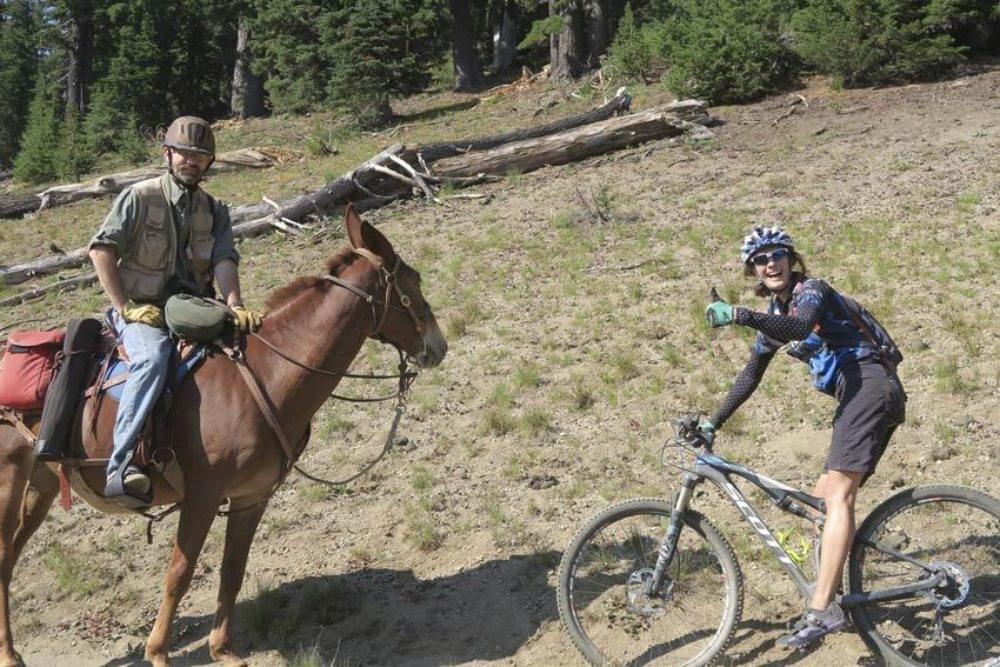




For the Benefit of All Trails We Must All Work Together
By recognizing the common goals that all trail user types share, and fighting for those goals together, it is possible to create a real and positive impact on the trails world.

In 2018 American Trails created the Trails Move People (TMP) coalition to bring together a diverse cross section of the organized trails community. Currently the coalition includes the following organizations:
Though each of the individual organizations have some of their own priorities, this coalition represents the shared goals that are important to all outdoor recreation users, rather they be hikers, cyclists, equestrians, snowmobilers, paddlers, or more. TMP uses collaboration, communication, and education to ensure that the benefits of trails are rightly considered by recreationists, industry, decision-makers, and the general public. We already know that outdoor recreation has a massive positive impact on our nation’s economy and that much of the impact is generated via trails.
American Trails will be holding a free webinar in partnership with the National Off-Highway Vehicle Conservation Council (NOHVCC) on March 19th to delve further into building broad support for trails through amplifying the united strength of the trails community.
The member organizations of TMP represent millions of Americans who spend their time, money and energy to get out on trails for fun and to volunteer. TMP hopes to elevate the recognition of trails by developing funding and research resources so that everyone irrespective of geography, mode of recreation, socio-economic status, or experience will have access to more and better trail opportunities and in turn more fulfilling personal experiences.
Why is this important? As American Trails Executive Director Mike Passo said in his two-part series Breaking Down the Silos (part one and part two), we all “vested interest in preserving, maintaining, and strengthening the trails infrastructure of our country.” Passo went on to point out there are many things we can all agree on, including:
Put simply, our voices are stronger together than they are apart. When there is an equestrian trail in danger of being closed, rather than having only the equestrians fighting for that trail, if the hikers, cyclists, OHV users, and others amplified those voices they would be more likely to be heard. When an OHV trail is fighting for more funding, if all trail users joined that fight, that plea would be more likely to be heard. This is true for all trail user types, for all trails, and at all levels, whether it be a city town hall or the halls of congress.
Strengthening Tribal Consultations and Nation-to-Nation Relationships
posted Dec 20, 2023
The Tribal Relations Program strives to enhance relationships between the Forest Service, Tribes, ANCs, non-federally recognized Tribes, and Native Hawaiians, as well as American Indian, Alaska Native, and other Indigenous individuals, communities, inter-Tribal organizations, enterprises, and educational institutions, thereby improving the agency’s ability to foster effective partnerships and respect Tribal sovereignty.
Engaging Diverse Groups in Building Community Resilience through Stewardship
posted Oct 11, 2023
Advocates, stewards, and volunteers are key to the success of ecologically balanced park projects and spaces. They provide vital assistance in the advocacy, establishment, maintenance, and educational outreach needed to ensure these spaces are in harmony with nature, well-maintained, and a welcoming place for all.
Partnership and Collaboration Skills and Competencies
posted Dec 5, 2019
Creating and maintaining partnerships; interagency project management; structuring agreements among partners; nurturing cooperation among a variety of recreation and conservation interests; planning trail systems across jurisdictional lines.
1,443 views • posted 03/10/2020